At OCP Regional Summit 2023 in Prague this year, we saw a number of new time cards. For those who are unaware, time cards are used to synchronize servers so that clocks in various servers can stay in lockstep. There is a big effort in the industry to move the function of keeping accurate time from network devices to in-card solutions with the ability to have little carryover loss. At the show, we were able to see a number of these different solutions.
A Very Quick Time Primer
While there is a good chance your home or office runs on NTP, that is a relatively imprecise protocol. The newer protocol for higher precision in time is PTP. While it may sound trivial if you are a half second off of the real time on your desktop, in servers it is a much bigger challenge.
When distributing applications from databases to 5G base stations, ensuring that the entire system is on the same clock is important. There are requirements in some industries like stock exchanges on not just the synchronization of servers, but also the clock drift that can happen if a GPS signal is lost. GPS is one of the main sources of truth for global time and is often used as a reference.
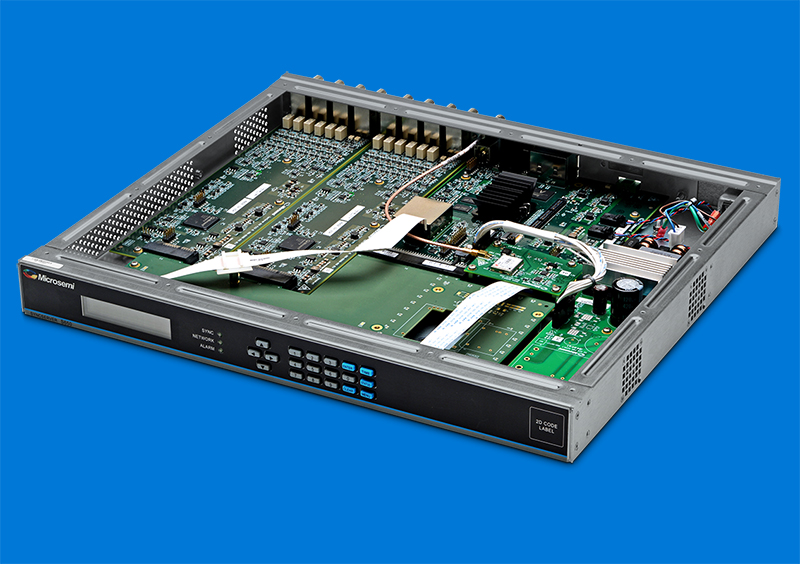
We had a piece at STH looking at the Microchip SyncServer S600 but it is the only piece where we actually lost footage somewhere in the editing handoffs. (It looks like we did a move from the NAS to an external pass-off drive instead of a copy before the backup ran, and that SSD later failed.) Microchip solutions have been a major player in this industry and are super easy to use with different clocks and even software that can tell if GPS signals are being jammed for military applications. While we are going to focus on time cards here, the Microchip SyncServer series is the plug-in and have easy software with a nice UI to do everything you need in a solution.
Time cards, that we are focusing on today, are currently for the folks that want to do this at scale and want to go the next step in building a solution.
Time Cards with Atomic Clocks at OCP Regional Summit 2023 Prague
The cards we saw at the OCP Regional Summit 2023 are from Safran by way of its Orolia acquisition (2022) and Spectracom (2007.) You will see a few of these brands interspersed.
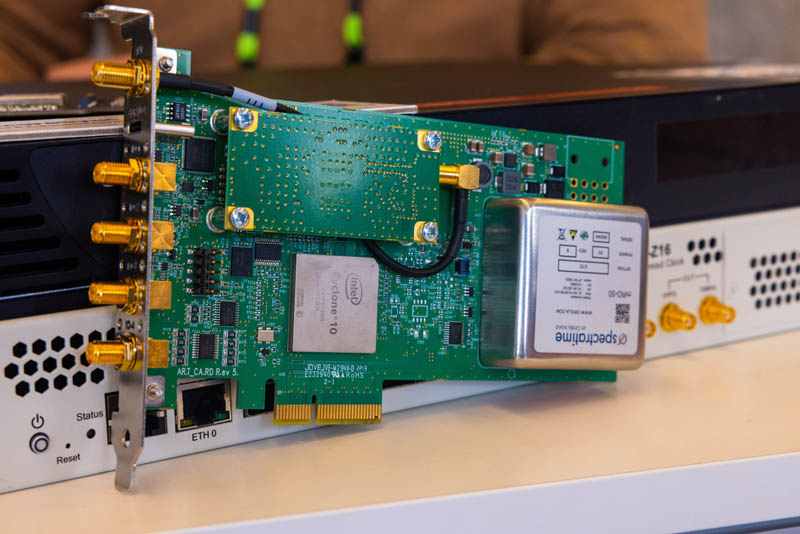
The Orolia card takes a time signal from GPS or other sources and then has an Intel Cyclone 10 onboard and a Spectratime atomic clock onboard to keep time with little clock drift if the main clock source is no longer available.
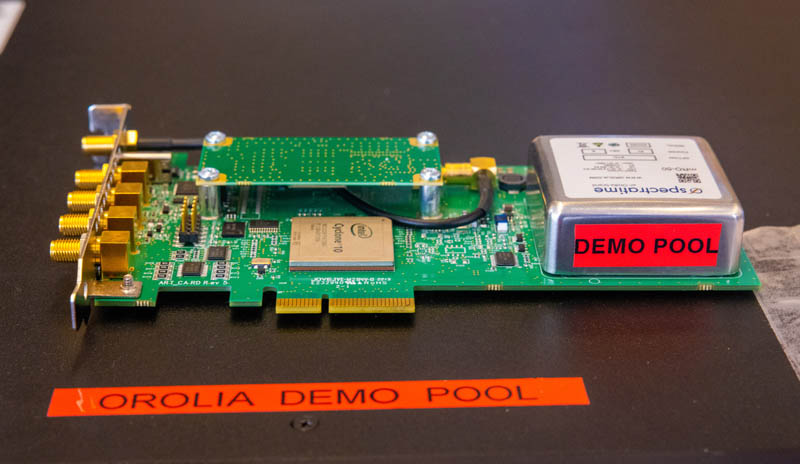
Here we can see the source antenna port and the output ports. There is even a USB Type-C service port.
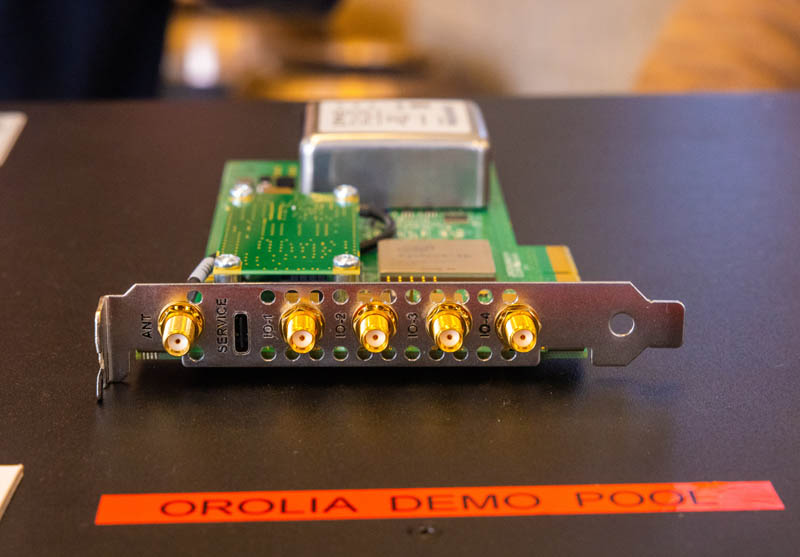
The current time card push has been largely due to Meta. The Timebeat team is taking those designs and building a more open ecosystem around time. The card at the show did not have a Cesium or Rubidium clock and instead had an OCXO clock. OCXO is the Oven Controlled Crystal (Xtal) Oscillator which is a high-performance quartz crystal clock. Still, the holdover clock drift with this is about double that of Cesium and about five times a Rubidium clock.
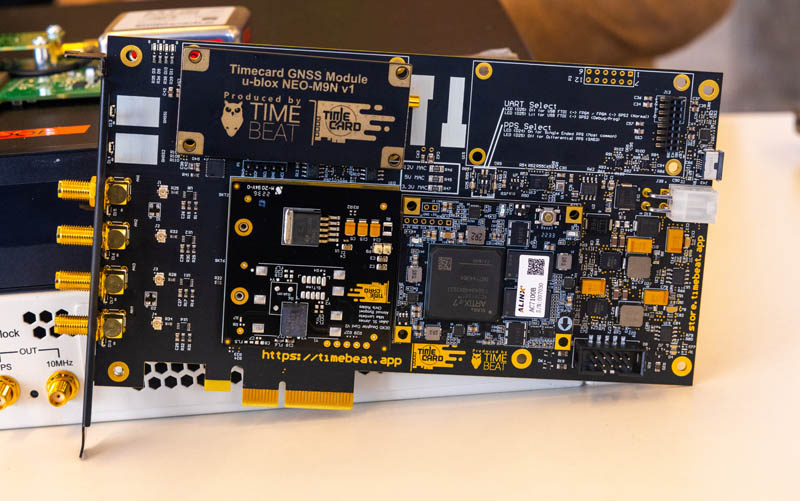
Here we can see the time sync ports on the card.
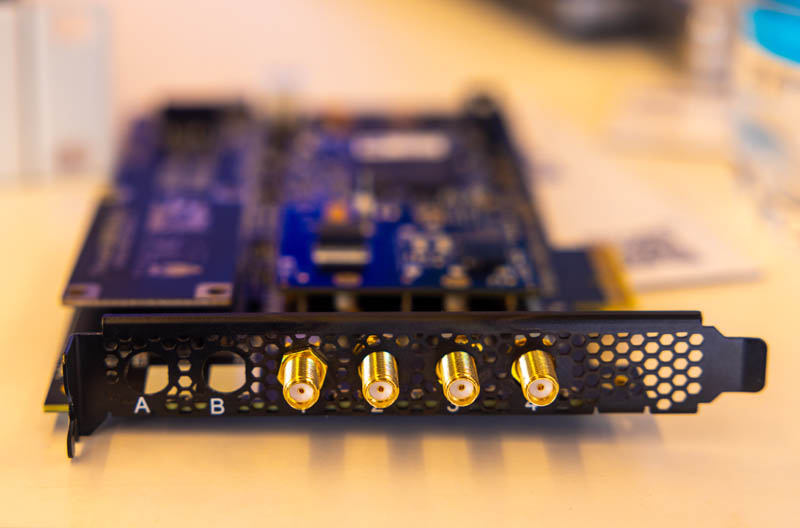
Here is another view of the card. We can see this is using an AMD Xilinx Artix 7 FPGA.
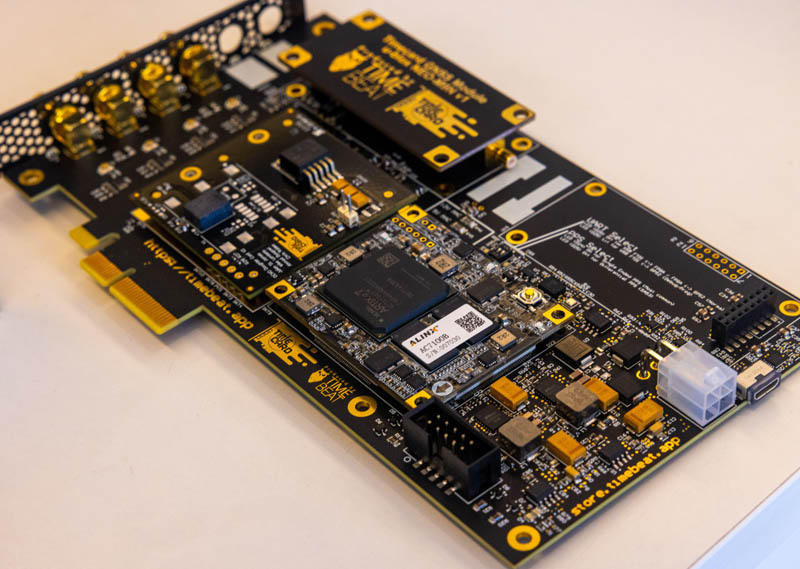
We asked and the OCXO clock is designed to be replaced with other clock types. Since this was in the Safran-Orolia booth, we have a Spectratime mRO-50 Rubidium clock shown here where it would go.
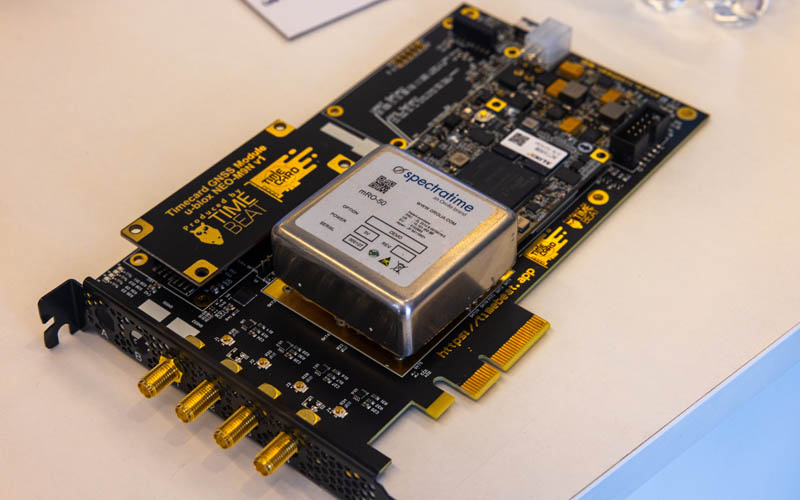
We asked, and this is a very simple process to remove and replace the different clock sources.
Final Words
Currently in the industry, there is tension between the traditional time Grandmaster server appliances with various customization options and easy-to-use software and these time cards. Part of that is getting serious on time, and Intel is probably a step ahead of AMD at this point on the low-level timing plumbing just due to its focus on 5G infrastructure.

What we know is that precision time has become a bigger deal and companies like Meta are pushing for the time cards as it allows them to run applications more efficiently. The industry is taking notice.
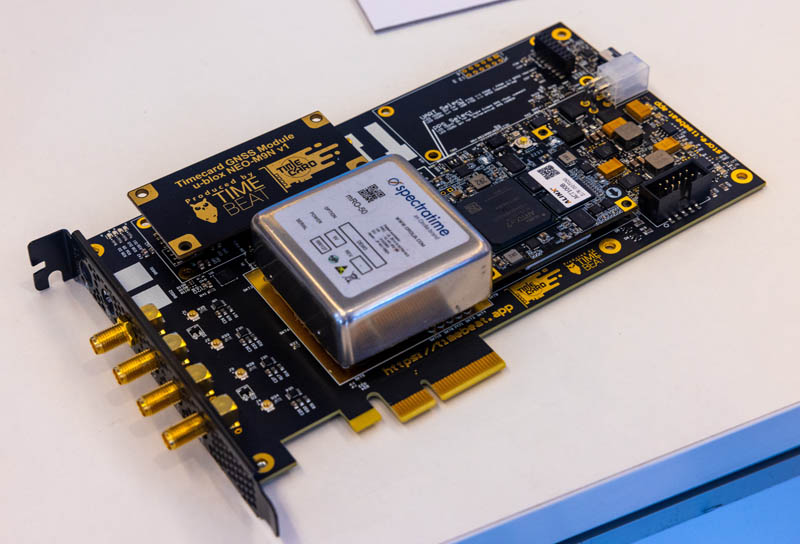
Hopefully, we will get to show our readers one of the new versions. The versions here are newer than when a bunch of videos were sponsored a few quarters ago, so there are some updates.

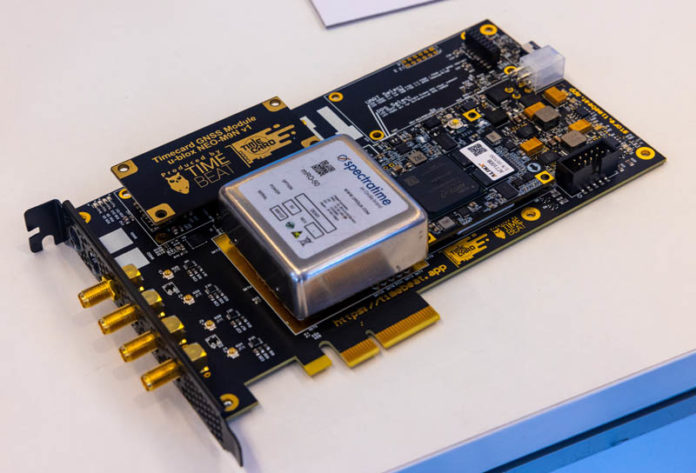



Amazing that an atomic clock can be so small that it is now an add-in card. Some atomic clocks like rubidium ones apparently drift after a while – does that mean these cards are only meant to handle a brief loss of a GPS signal, as opposed to allowing years of run time without the need to synchronise anything?
@malvineous we use similar chip scale atomic clocks from MicroSemi for underwater applications. We’ve found that, depending on how long we initially sync to GPS, they stay within 1ms of true for 2 to 4 weeks.
I’m unsure of the precision servers need, but the oscillators would only be required for short GPS outages.
Trying to acquire one for a while now, these aren’t off the shelf parts, made inquiries or orolia/safran (unresponsive) and osciloquartz, but no where to buy. hope that changes.
@Rodney. Exactly. NTP is more accurate than 500ms anyway. I’m unsure of what environment would require PTP over NTP outside of financials, and an OXCO oscillator is the middle of the road in that world anyway.
For PTP grandmaster is the oscillator does come in to play as there is a difference in accuracy between rubidium, OXCO and TXCO. That said, a properly designed PTP set up doesn’t need separate cards like this. Just a proper grandmaster hierarchy and a NIC that can handle it, of which there are several.
I think it’s interesting that people want to discipline their atomic clocks with GPS. Getting GPS into the mix makes the system much more complex. You have to assume GPS will go wrong, as it does from time to time. As the adage goes, a man with two clocks is never sure what time it is. It is so much simpler and more robust to use the atomic clocks only, so why do people still want atomic+GPS?
@Jeffrey W. Baker
I think that the use of GPS for time source can be a legal requirements for some application.
ther than that, it’s true that a man with 2 clocks is never sure what time it is, but if you have to sincronize data (and i mean sincronize) from many remote locations, is exponentially worse.
@Dr_b_, they are available from Timebeat.
https://store.timebeat.app/